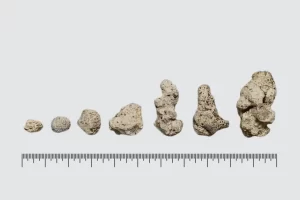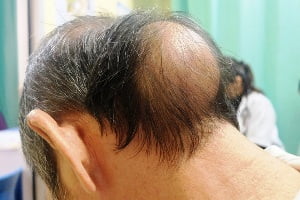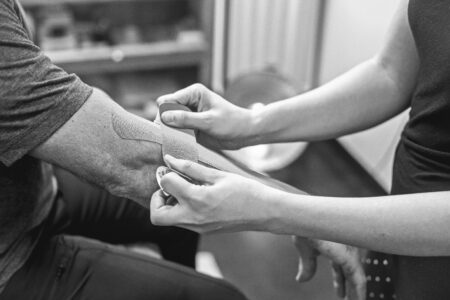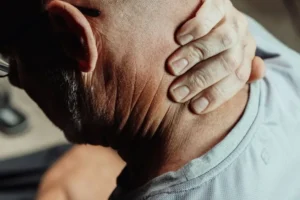Muscle Burnout is Real and Here’s How to Avoid It
- Updated on: Apr 21, 2025
- 6 min Read
- Published on Apr 21, 2025

Sure, everyone, especially nowadays, wants to ensure that they’re staying in good health, right? That’s why so many people exercise, watch what they eat, drink more water, and even focus on their mental health. However, there’s a fine line between pushing through and overdoing it, and honestly, most people only realize they’ve crossed it when they’re flat on the couch, sore in places they didn’t know had muscles.
But yeah, burnout sneaks in quietly. And no, it’s not always about your job either. For example, one minute you’re on a roll, hitting every session with that unstoppable energy, and the next, your body feels like it’s throwing a silent protest every time you reach for your gym shoes. But really, it’s not about laziness or lack of grit, it’s about not giving your body the space to recover the way it needs to.
The frustrating part of it all, though? Well, burnout doesn’t always look like exhaustion. Yeah, you’d think so, but no, not always. Actually, sometimes it shows up as stalled progress, random aches, or that heavy, unmotivated feeling that makes even your favorite playlist sound like elevator music. And when the drive to work out takes a nosedive, most people just try to push harder, which only makes it worse. Well, the truth is, if you want to keep showing up and crushing it, you need to train smart, not just train more. Here’s how to actually avoid burnout before your body decides it’s had enough.
Why Recovery Days Matter More than You Think
Yeah, sure, everyone knows it’s needed, but it’s best to go more into detail about it. So, the grind is real. You wake up sore, swipe on your gym app, and convince yourself that pushing through one more session is a badge of honor. After all, how else are results supposed to happen, right? The thing is, your body doesn’t grow stronger during workouts. It gets stronger while recovering from them. That soreness you keep trying to ignore is your body whispering, and eventually yelling, that it needs a break. Plus, it leads to burnout, too, if you overdo it.
Seriously, though, rest days aren’t for the weak. They’re for the smart. They’re the difference between progress and plateau, between showing up energized or crawling through every set wondering why everything suddenly feels heavier. But really, giving your muscles a break is just as crucial as training them in the first place.
Your Muscles aren’t Machines
It sounds obvious, but it’s easy to forget. Muscles aren’t built like heavy-duty gym equipment; they’re living tissues that go through stress and damage every time you work out. And guess what? That damage is intentional. So yeah, microtears in muscle fibers are part of the process. But they only repair and grow if you give them time.
Basically, training nonstop just compounds the damage. Recovery days give those muscle fibers a chance to rebuild stronger. Skip that part, and you end up spinning your wheels, stuck in a frustrating cycle where you’re working hard but not seeing the gains, pr worse, you risk injury, which will sideline you longer than any planned rest day ever could.
Burnout isn’t Just Mental
Okay, so let’s go ahead and circle back to the beginning. So, when people think of burnout, they picture mental exhaustion. But physical burnout is just as real, and sometimes even more sneaky. You might chalk it up to poor sleep or stress, but it often comes down to a body that’s been running on empty for too long.
So, a sudden drop in motivation, lack of strength, slower recovery, and even getting sick more often are all signs your body might be tapping out. Adding in recovery days gives your system the breather it needs to catch up, so you don’t have to step back altogether when it eventually forces you to.
Recovery isn’t Passive
Yeah, you’d think so (as most do), but no, it’s not like that. So, taking a day off doesn’t mean sinking into the couch like a potato. Actually, recovery can be active too. Think walking, stretching, yoga, or even light cycling. Just generally speaking, these activities keep your body moving and promote blood flow, which helps flush out waste and bring in nutrients your muscles need to repair. So, what matters is lowering the intensity and giving your body room to breathe. It’s about being kind to yourself, not going completely still.
Really, your body works hard every time you train; the least you can do is meet it halfway.
Fuel Your Recovery Right
At this rate, who doesn’t know this? By all means, it’s true that sleep and nutrition are practically the “power couple” of recovery, right? You could schedule the perfect rest day, but if your diet is lacking and you’re running on five hours of broken sleep, it’s not going to do much. Sleep is when the bulk of muscle repair happens, and nutrition is what makes that repair possible.
Okay, so most people will look into supplements since they know it’s one of the best ways to help (which is absolutely true). Alright, so there’s hydration, protein, and yes, amino acids all play a role. So, amino acids were just mentioned, but it’s time to get a little more specific, so EAAs (which are known as essential amino acids) are especially helpful for recovery since they include the building blocks your muscles need but can’t produce on their own.
Basically, you’re going to need all of these if you actually want some real progress, just keep that in mind.
There’s the Comparison Trap
So, this one might hit close to home depending on who you are. One of the biggest reasons people skip recovery days is because of the comparison trap. It’s honestly pretty sad, but yeah, it’s so true too. What’s the problem here? Well, social media is flooded with back-to-back gym selfies, and hustle culture makes rest look like slacking off. But no one posts their injuries or the burnout that hits when they ignore their limits.
Just remember this please: your journey is yours. The only person you need to keep up with is the version of you who wants to do this long-term. That person knows the value of balance and is not afraid to take a pause when it counts. Recovery isn’t quitting. It’s investing in the future version of you who still wants to be lifting, running, or dancing years from now.
Make Recovery Non-Negotiable
Well, instead of waiting until your body forces you to take a break, make recovery part of the plan from the start. Treat it like any other workout day, something scheduled, something intentional. Build it into your week, and stick to it. But recovery isn’t a backup plan for when things get too hard. It’s a part of the process that makes everything else work better. You train, you rest, you grow. That’s the rhythm. Skip one step, and the whole thing stumbles.
Everything You Thought You Knew About Recovery Might be Wrong
There’s something oddly satisfying about being sore the day after a workout. It feels like proof. Like evidence that something’s working. But that ache in your arms or the stiffness in your legs is not the ultimate sign of a good session, it’s just a sign your muscles are a little irritated. And chasing that feeling every time might be doing more harm than good. Basically, that “no pain, no gain” mantra needs to be kicked to the curb.
Soreness isn’t Always a Badge of Honor
This one definitely needs to be highlighted first because this seems to be the worst of it all. So, delayed onset muscle soreness has earned a strange sort of prestige. Some folks treat it like a gold star. But being sore just means your body’s repairing damage. It doesn’t guarantee a better workout or more muscle growth. It could just mean the body wasn’t ready for that level of stress, or the form was off, or something went a little sideways.
You can still have incredibly effective workouts without hobbling around the next day. It’s more about consistency anyway.
Rest Days aren’t Lazy Days
Yeah, so it’s time for this one. So, there’s a difference between skipping workouts and giving your body the space it needs to repair. It was already mentioned earlier, but the rest isn’t a pause in progress; rather, you really just need to see this as a part of the process. Just generally speaking, muscles rebuild during recovery, not during reps. Skipping rest might feel productive in the moment, but it often leads to fatigue, injury, and burnout.
More isn’t Always Better
There’s this common assumption that more sets, more weight, and more sessions will equal more results. It was only briefly mentioned earlier, but no, it doesn’t work like that. The body has limits, and pushing past them too often can slow everything down. Without proper recovery, performance dips, sleep gets messy, and motivation vanishes.
Besides, training smart means knowing when to pull back. Resting doesn’t mean doing nothing. It can mean lighter workouts, more mobility, better nutrition, or just sleeping in once in a while.












